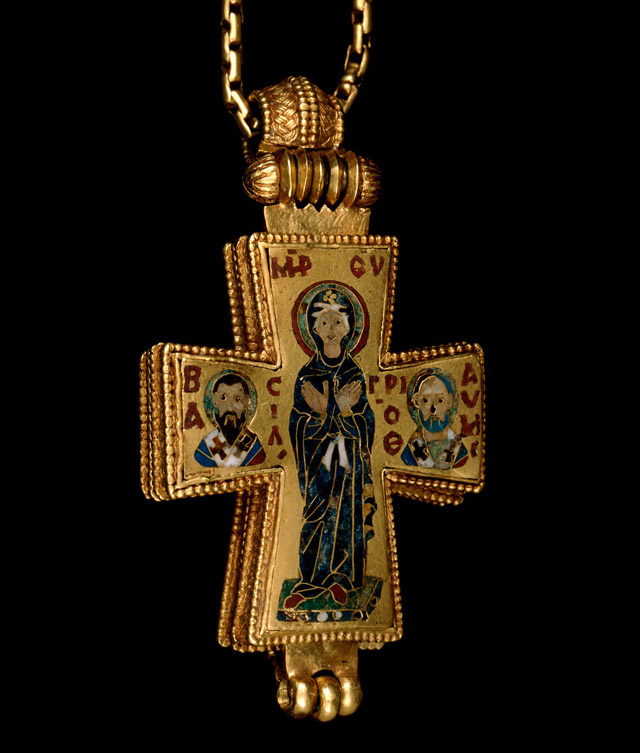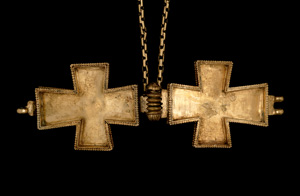Pendant Reliquary Cross
The British Museum, London
Copyright © The Trustees of the British Museum

 Select the image to zoom
Select the image to zoom
This reliquary cross, which preserves its original chain, is made of gold and decorated with multicolored cloisonné enamelwork sunk into a gold background. This technique, known as Senkschmelz, is in contrast with the earlier taste for fully enameled crosses, such as the Paschal cross from around 817–24. The enamel sheeting from the front of the cross is missing; what remains is the reverse, which shows the central standing figure of the Virgin Mary, with hands crossed upon her chest in prayer. She is clad in a blue chiton (a type of tunic) and a maphorion (a mantle) and stands on a pedestal that resembles a suppedaneum used to support the feet in a crucifixion. To the Virgin's left is a bust of St. Gregory Thaumatourgos (a third-century bishop from Asia Minor) and to her right the bust of St. Basil the Great (a fourth-century bishop known as one of the Cappadocian fathers); all three figures are identified by abbreviated inscriptions in Greek. The reliquary is hinged and opens to reveal a space just under a centimeter deep that would have held an important relic, possibly a fragment of the True Cross or a Passion relic given the costly materials and the extraordinary quality of the workmanship. The reliquary is reputed to have been found in the ruins of the Great Palace of Constantinople.





